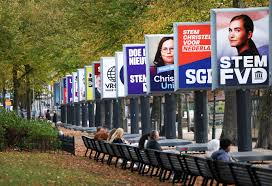The Netherlands is set for a crucial snap election on October 29, 2025, following the dramatic collapse of its ruling coalition over a bitter row on immigration policy. The outcome will be closely watched across Europe, as the far-right continues to gain momentum on the continent.
Polls suggest that Geert Wilders’ Freedom Party (PVV) could once again emerge as the largest party, repeating its shock success from 2023. Wilders, known for his anti-Islam and anti-EU stance, withdrew his party from the coalition in June, accusing the government of being too soft on immigration. His move triggered the early election and political instability.
However, despite leading in the polls, Wilders is unlikely to become prime minister. Most mainstream parties, including the liberal VVD and centrist CDA, have ruled out forming a coalition with the PVV. This makes the race for second place critical in determining who will lead the next government.
Running close behind is the GroenLinks/PvdA alliance led by former European Commission vice-president Frans Timmermans, a seasoned politician known for his environmental agenda. Rising rapidly in the polls is Henri Bontenbal, the 42-year-old leader of the centrist CDA, who promises to restore “normal politics” and reduce polarisation.
Key voter concerns include housing shortages, immigration, healthcare, and the cost of living, according to an EenVandaag poll. The Netherlands faces one of Europe’s toughest housing crises, while healthcare and living costs continue to squeeze households.
With 27 parties competing for 150 parliamentary seats under a proportional voting system, no single party is expected to win an outright majority. Coalition negotiations could take months — the last government took 223 days to form.
As Dutch voters prepare to cast their ballots, the outcome will not only shape domestic policy but could also influence the broader European political landscape.

